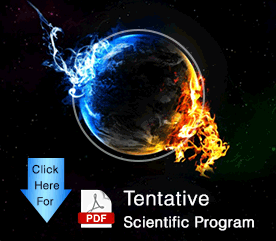Maria Luisa Baiño-Salingay
IHE Delft Institute of Water Education and Technical University of Delft (TU Delft), Netherlands
Title: Pesticide contaminations and public perceptions on its effect to human health: Case study of Philippines and Vietnam
Biography
Biography: Maria Luisa Baiño-Salingay
Abstract
Agriculture expansion in developing countries, like Philippines and Vietnam, where unproductive uplands were converted to fast cash crops has affected the environment and human health. Agricultural expansion, not only adversely affected the biodiversity but increased surface run-off from the agricultural areas, bringing agricultural waste, including residual pesticides. Pesticide contamination brought by surface runoff is a major concern as precipitation is more intense and frequent due to climate change. The importance of these pesticides are well recognized and fully understood, that these are developed with strict guidelines for very reasonable purpose. But the application and management of pesticides should be done with precautionary measures to minimize the negative impacts on human and environmental health if misused or overused. The major concern of this study is that harmful effects of pesticides are not fully understood by the end users, the farmers. Because of lack of awareness and knowledge, it is also unknown to many that even small concentrations of the banned pesticide can lead to serious health impacts because it persists and biomagnifies in the food chain and human body. Since research studies on the harmful effect of pesticides on public health are limited,
especially on chronic effects of long-term exposure. This research aimed to bridge the gap of knowledge in the health implications of pesticide exposure in human by first getting their own perception on pesticide contamination not only to the farmers but also to communities surrounding these agricultural areas using surface water for domestic water source. This study conducted survey on pesticide applications and management, knowledge on both the positive and negative effects and health awareness on both farmers and surrounding communities. The results will then be used to assess the extent of pesticides human exposure of these research areas using international accepted model software.

